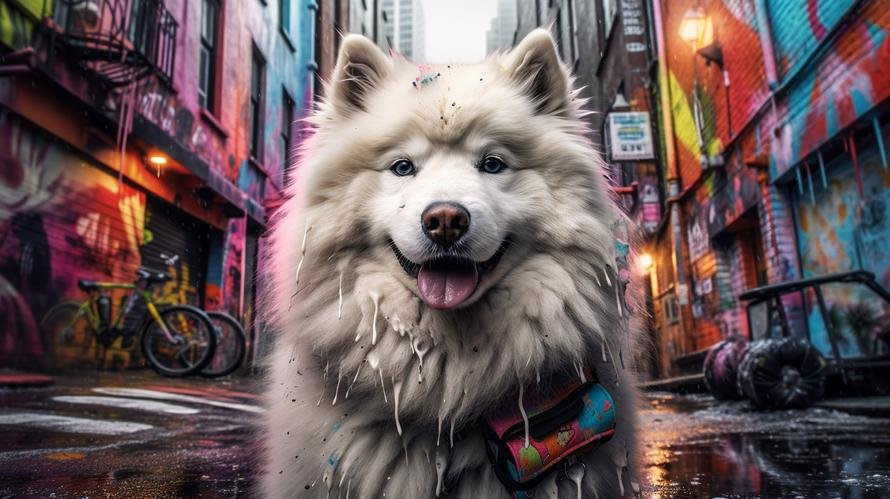Imagine you’re in a winter wonderland, staring in awe at a majestic, fluffy, and pure white arctic wolf-like dog galloping elegantly towards you from a distance. The dog’s pricked ears, ever-alert eyes, and heartwarming smile immediately capture your heart. This adorable, playful, and sociable creature is none other than the Samoyed, a breed that originated from the cold regions of Siberia. But before you get entirely charmed by this ‘smiling sledge dog’, there’s a crucial question you must consider – does a Samoyed shed a lot?
The dog breed named Samoyed, affectionately known as ‘Sammie,’ is indeed known to have a heavy shedding cycle. This shedding cycle is popularly called ‘blowing their coat.’ Now, this term can seem rather confusing. Your dog isn’t going to inflate like a balloon and then pop, sending fur flying everywhere. Although, to be honest, it might feel like that sometimes. Sammies shed their thick double coats twice a year, most commonly in the spring and autumn.
I know it sounds a lot. But fear not, prospective Sammie owner. With the right information, tools, and routine, managing Sammie’s shedding can be less daunting than it seems. It might even become a wonderful bonding experience between you and your canine friend.
The Samoyed’s lavish coat, dotted with ice-resistant hairs, acts as their armor against chilling winds and frost in their native Siberian climate. Essentially, a Sammie’s double coat comprises an inner and outer layer. The outer layer boasts long, coarse hairs resistant to dirt and ice. On the flip side, the inner coat, softer and wool-like, is where the main shedding action takes place. This fluff-fest gives Sammie its signature plumped up fur look and helps them retain body heat.
So why does the Samoyed breed shed so much? It’s actually Mother Nature’s way of preparing the dog for the changing seasons. When spring knocks, the coat reacts by shedding to accommodate the warmer season, and when fall arrives, the coat once again sheds to make way for a thicker winter coat.
Given this repeated cycle, it’s safe to say that owning a Samoyed is not the best choice for allergy sufferers or people who like their homes immaculate free of dog hair. However, before you turn your back on these friendly, clever, and mischievous furballs, here’s the good news – Sammies are hypoallergenic. What this means is that they don’t produce a strong pet odor, and the shedding hair doesn’t carry much dander, a common allergen. However, do note that ‘hypoallergenic’ does not equal ‘allergen-free,’ and individual reactions may vary.
Managing Samoyed shedding doesn’t require magic; it merely requires consistency and a few good grooming tools in hand. Investing in a quality brush is key – ideally, a slicker brush, or better yet, a deshedding tool that reaches the undercoat will do wonders. Regular brushing, particularly during their shedding seasons, helps remove loose hair before it ends up on your furniture and clothes.
Routine grooming plays a vital role too. A typical Sammie grooming routine includes brushing your pooch 2-3 times a week, and washing them once every month. But when it’s the shedding season, daily brushing is recommended. As tedious as it might sound, an added advantage of regular grooming is that it helps spread natural oils evenly through your Sammie’s coat, preserving its health & shine.
Remember, regular brushing and grooming not only keep your house as hair-free as possible, they are also vital for the happiness and health of your Sammie. Grooming sessions can be a bonding experience, a peaceful time built on trust and love between you and your fluffy companion.
To sum it up, while owning a Samoyed implies extensive grooming commitments and living amidst some floating fur, the unwavering loyalty, countless tail wags, and heartwarming smiles they offer easily outweigh these inconveniences. As long as you are prepared to embrace the shedding, a Samoyed can make a wonderful, loving addition to your family, bringing joy and companionship in their wake.



